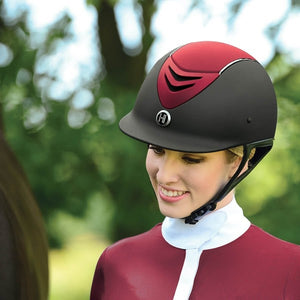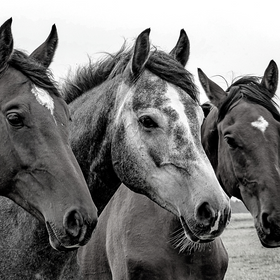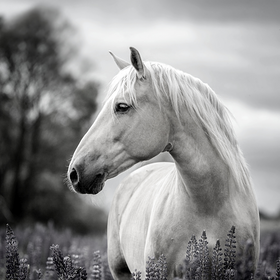
How to Braid Your Horse’s Mane
As an equestrian, mane braiding is a vital skill to learn especially if you plan to show your horse. Of course, a braided mane looks beautiful and professional, but it can also protect your horse’s mane from mats and tangles. Every horse’s mane is different—the hair can range in thickness, length, and texture. You may find success with specific braid styles over others.
Remember, a horse’s mane is connected to muscles which means a horse can move his mane. That being said, we must be gentle as we braid. Just like us, sharp pulls can be painful to your horse.
Tools Needed for Braiding
Scissors
A pair of blunt scissors will be your best friend. With your scissors, you can trim excess hair and neaten up ends. Always be careful when using scissors near your horse to avoid injury. Scissors will also help you remove old elastic bands from previous braids.
Combs and Brushes
The most important tool for mane braiding is a collection of wide tooth combs and brushes. Before you begin your braid, always run a comb or brush through your horse’s mane. This will remove tangles and make it easier to work with the hair.
> Shop all brushes and combs here. <
Elastic Bands
When you complete your braid, you will need a way to secure it. Just like human hair, the easiest way to secure your braid is with an elastic band. Elastic bands are sold in a variety of sizes and colors for different occasions.
> Shop all elastic bands here. <
How to Prepare for Braiding
Cleaning the Mane
First, brush through your horse’s mane to remove any debris. Next, you should wet and shampoo your horse’s mane. Massage the shampoo thoroughly into the roots to thoroughly clean the hair.
Finally, rinse the soap and apply conditioner. Make sure to thoroughly rinse the shampoo as residue will dry the hair and make it brittle.
> Shop all grooming supplies here <
Basic Braids
French Braid
The French braid is a classic three-stand braid that will start at the top of the mane. This style braid is ideal for keeping your horse’s mane safe and clean(er) during turnout.
- Divide the mane into three sections.
- Start with the right section and cross it over the middle section.
- Take the left section and cross it over the middle section.
- Continue this process until you reach the desired length.
- Secure with an elastic band.
Running Braid
The running braid is a basic two-strand braid that will start at the top of the mane.
- Divide the mane into two sections.
- Start with the right section and cross it over the left section.
- Take the new right section and cross it over the left section again.
- Continue this process and add more mane as you go.
- Secure with an elastic band.
Dutch Braid
The Dutch braid is an outward facing three-strand braid. Unlike the French braid, were the braid itself is tucked under, the Dutch braid will be on top. You see Dutch braids regularly used for tail braids in Dressage and Hunter/Jumper competitions.
- Divide the mane into three sections.
- Start with the right section and cross it under the middle section.
- Take the left section and cross it under the middle section.
- Continue this process and add more mane as you go.
- Secure with an elastic band.








